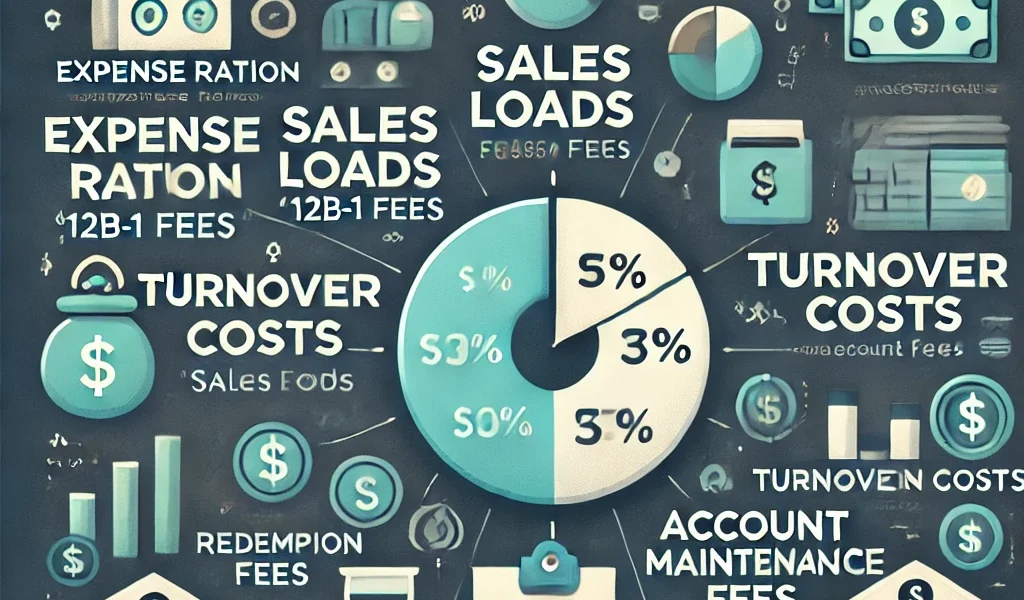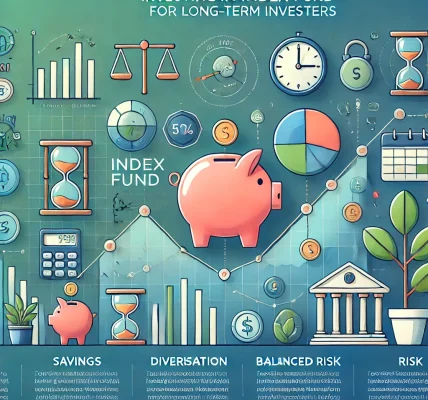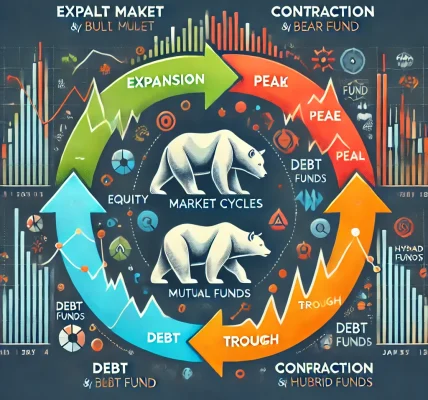Mutual funds are one of the most popular investment options for individuals looking to grow their wealth. While they offer diversification, professional management, and convenience, investors must be aware of the hidden fees that can significantly impact returns. Many investors focus only on the visible expenses, such as expense ratios, but fail to consider various hidden costs that may eat into their profits over time. In this blog, we will break down the different types of hidden fees in mutual funds, how they affect investors, and how to minimize their impact.
Understanding Mutual Fund Fees
Before diving into hidden fees, it is essential to understand the general fee structure of mutual funds. Most mutual funds charge investors fees to cover the costs of managing and operating the fund. These fees can be categorized into two main types:
- Ongoing Fees – These are recurring fees that investors pay throughout their investment period. Examples include expense ratios and account maintenance fees.
- Transaction Fees – These are fees incurred when investors buy or sell mutual fund shares. Examples include sales loads and redemption fees.
However, in addition to these visible fees, many hidden charges can significantly impact an investor’s net returns.
Types of Hidden Fees in Mutual Funds
1. Expense Ratio – The Obvious Yet Overlooked Cost
While the expense ratio is usually disclosed, many investors fail to realize its long-term impact. The expense ratio covers fund management fees, administrative costs, and other operating expenses. Even a small difference in the expense ratio can result in significant cost differences over time.
How it Affects Investors:
- A higher expense ratio reduces overall returns.
- Actively managed funds tend to have higher expense ratios compared to index funds or ETFs.
- Compounding effects can magnify these costs over long periods.
2. Sales Loads (Front-End and Back-End Fees)
Mutual funds often charge sales loads, which are commissions paid to brokers or financial advisors. These fees can be classified into:
- Front-End Load: A percentage fee deducted from the initial investment. For example, a 5% front-end load on a $10,000 investment means only $9,500 is actually invested.
- Back-End Load (Deferred Sales Charge): Charged when an investor sells fund shares before a specific period (e.g., within five years). This fee typically decreases over time.
How to Avoid It:
- Choose no-load funds, which do not charge sales commissions.
- Be cautious when financial advisors push funds with high front-end or back-end loads.
3. 12b-1 Fees (Marketing & Distribution Fees)
12b-1 fees are marketing and distribution fees that mutual funds charge investors to cover advertising costs and broker commissions. These fees are included in the expense ratio but are not always highlighted.
Impact on Investors:
- Can range from 0.25% to 1% annually.
- Often provide little benefit to investors but add to fund costs.
How to Avoid It:
- Look for funds with low or zero 12b-1 fees.
- Opt for index funds or ETFs, which generally do not charge these fees.
4. Turnover Costs (Trading Fees & Capital Gains Taxes)
When mutual fund managers frequently buy and sell stocks within a fund, they incur trading costs known as turnover costs. High portfolio turnover can result in additional brokerage fees and capital gains taxes for investors.
How to Identify & Minimize:
- Check the fund’s turnover ratio (higher turnover = higher trading costs).
- Long-term investors should prefer low-turnover funds to reduce unnecessary costs.
5. Redemption Fees
Some mutual funds charge redemption fees when investors sell their shares within a certain period, typically within 30 to 90 days of purchase.
How to Avoid It:
- Read the fund’s terms and conditions before investing.
- Choose funds with no or low redemption fees.
6. Account Maintenance Fees
Certain funds charge annual maintenance fees, particularly for small accounts below a minimum threshold.
How to Avoid It:
- Maintain a balance above the minimum requirement.
- Choose mutual funds that do not impose such charges.
7. Performance-Based Fees (for Some Actively Managed Funds)
Some actively managed funds charge performance-based fees, where additional charges apply if the fund outperforms a certain benchmark.
Impact on Investors:
- While these fees may incentivize better fund management, they can significantly reduce returns.
How to Avoid It:
- Prefer funds with transparent, fixed fees instead of variable performance-based fees.
How to Identify and Minimize Hidden Fees
1. Read the Fund Prospectus
The prospectus contains details about fees and expenses. Investors should carefully review sections related to costs before investing.
2. Compare Funds Based on Fees
Use online platforms such as:
- Morningstar
- Value Research
- Fund Fact Sheets
These platforms provide comparative expense ratios and other fee details.
3. Opt for Passive Investing (Index Funds & ETFs)
Passive funds typically have lower costs than actively managed funds because they track a market index rather than requiring frequent trading.
4. Ask Financial Advisors About Fee Structures
If you are using a financial advisor, ask about commission-based vs. fee-only advisory services. A fee-only advisor charges a flat fee rather than earning commissions from fund providers.
5. Consider Direct Plans Instead of Regular Plans
- Regular Plans: Sold through brokers and intermediaries, leading to higher commissions.
- Direct Plans: Purchased directly from the mutual fund company, avoiding distribution costs.
Investors can save up to 1% annually by choosing direct plans, leading to significant long-term savings.
Example: Impact of Hidden Fees Over Time
Let’s assume two investors, A and B, invest ₹10 lakhs each in mutual funds for 20 years.
| Parameters | Investor A (Low-Fee Fund) | Investor B (High-Fee Fund) |
|---|---|---|
| Initial Investment | ₹10,00,000 | ₹10,00,000 |
| Annual Return | 12% | 12% |
| Total Fees (Including Hidden Fees) | 1% | 2.5% |
| Final Portfolio Value | ₹96.5 Lakhs | ₹65.3 Lakhs |
Investor A ends up with ₹31 lakhs more than Investor B simply by choosing a lower-fee fund!
Final Thoughts
Hidden fees in mutual funds can have a significant impact on investment returns over time. By being aware of these charges and taking proactive steps, investors can maximize their gains while minimizing unnecessary costs. Always read the fine print, compare expense ratios, and choose funds that align with your financial goals while keeping fees low.
Key Takeaways:
✅ Choose no-load mutual funds to avoid sales charges. ✅ Prefer low-expense ratio funds. ✅ Invest in index funds or ETFs for lower costs. ✅ Select direct plans instead of regular plans. ✅ Read the fund prospectus to check hidden fees.
By following these strategies, you can ensure that your mutual fund investments are cost-efficient and deliver the best possible returns over time. Happy investing!




